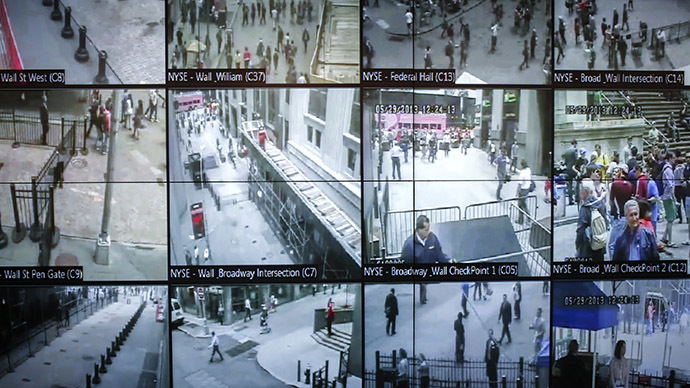Chicago activists claim police used 'Stingray' surveillance during Garner protests

Stingray surveillance technology is increasingly being used by police departments in routine law enforcement, but Chicago protesters claim police used the technology to keep a close eye on demonstrators and disrupt their movement.
Activists around the country have been using cellphones and social media to organize “flash mob” style protests to keep ahead of police during demonstrations over the lack of grand jury indictments in two incidents when police killed unarmed black men. In Chicago, activists say they have proof that police used Stingray IMSI Catchers to eavesdrop on their phones and track their movements.
READ MORE: Dragnet: Justice Dept gets airborne to spy on thousands of American cellphone users
The technology – a cellphone tracking device about the size of a suitcase – is commonly referred to as “Stingray” after a popular brand. It typically tricks a user’s phone into thinking that it is a provider, forcing phones in the immediate area to send data to the police instead of the nearest cellphone tower. Officers can then track cellphone users' locations and identifying information.
The activists told WBBM radio that their proof comes in the form of a radio exchange between officers on the street and headquarters during a recent protest.
Dispatch: “CPIC [Chicago police’s spy ‘fusion’ center] on the
air for a mobile”
Officer 1: “Go ahead”
Officer 2: “Yeah one of the girls, an organizer here, she’s been on her phone a lot. You guys picking up any information, uh, where they’re going, possibly?”
Officer 1: “Yeah we’ll keep an eye on it, we’ll let you know if we hear anything.”
Officer 2: “10-4. They’re compliant, and they’re, they’re doing ok now but she’s spending a lot of time on the phone.”
Officer 1: “10-4”
Activists posted photos online of a “City of Chicago” marked emergency management vehicle following protesters. It has what looks to be a radar on top.
READ MORE:FBI forces police departments across the US to keep quiet about cellphone spying gear
Some protestors said that when the emergency management vehicle – which they believe to be Stingray equipped – was nearby, their phones wouldn't work properly.
Wtf is this? It keeps flowing the protest. And It messes up my phone when it drives by #ericgarnerpic.twitter.com/yDFdwqgZ2y
— Page May (@may20p) December 5, 2014
In October, the Chicago Police Department acknowledged that it had purchased cellphone interceptor devices back in 2008.
Meanwhile, protestors in other cities have reported the same experience regarding intercepted phone calls.
Protesters in LA, NYC tweeting photos of what appear to be stingrays (invasive cell phone surveillance devices) at protests #EricGarner”
— Russell Little (@RussellLittle) December 5, 2014
This type of invasive surveillance raises questions among civil rights and privacy groups about violations of the US Constitution’s First and Fourth Amendments – the right to free assembly, and protection against unreasonable searches and seizures.
READ MORE: US Marshals transfer controversial ‘Stingray’ cellphone surveillance to prevent ACLU review
The American Civil Liberties Union knows that 18 police departments are using the technology in routine police work. However, the public hasn’t been informed, and details about when the technology is used are not forthcoming.
“The government is hiding information about new surveillance technology not only from the public, but even from the courts,” ACLU staff attorney Linda Lye wrote in a legal brief. “By keeping courts in the dark about new technologies, the government is essentially seeking to write its own search warrants, and that’s not how the Constitution works.”
In October, the FCC launched an investigation into the potential criminal use of IMSI Catchers after Rep. Alan Grayson (D-Fla.) suggested they could be used by criminals or spies hidden within the US.












